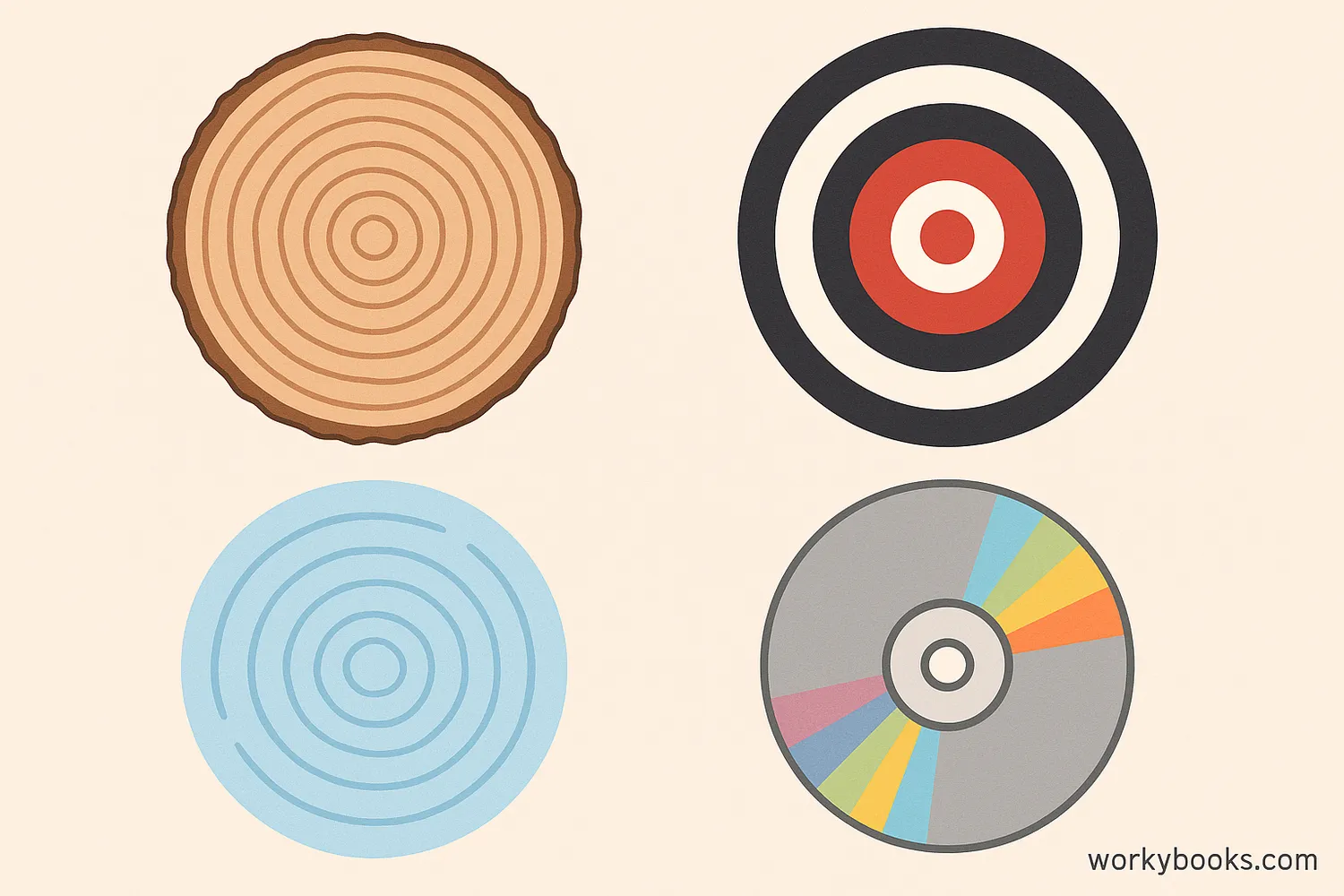Concentric Circles - Definition, Examples, Quiz, FAQ, Trivia
Learn about circles sharing a common center with different radii
What are Concentric Circles?
Concentric circles are sets of circles that all share the same center point. The word "concentric" comes from Latin words meaning "together in the center."
Each circle has a different radius (the distance from the center to the edge). This means:
- All circles have exactly the same center point
- Each circle has a different size (different radius)
- The circles never touch or cross each other
Concentric circles are found everywhere in nature and human-made objects. Think of ripples in water when you drop a stone, tree rings, or a target board.
Key Concept
Concentric circles share a common center but have different radii. The space between two concentric circles is called an annulus.
Properties of Concentric Circles
Concentric circles have special mathematical properties:
1. Common Center: All circles share exactly the same center point. This is what makes them concentric.
2. Different Radii: Each circle has a different radius (distance from center to edge). The radii can be any length as long as they're different.
3. Never Intersect: Since they share the same center but have different sizes, concentric circles never touch or cross each other.
4. Annulus: The region between two concentric circles is called an annulus. It looks like a ring or a washer.
5. Symmetry: Concentric circles have rotational symmetry. This means they look the same no matter how you rotate them around their center.
Remember
Concentric circles must have exactly the same center point. If circles have different centers, they're not concentric, even if they look similar!
Real-World Examples

Concentric circles appear all around us in nature and in objects we use every day:
1. Tree Rings: When you cut through a tree trunk, you see concentric circles. Each ring represents one year of the tree's growth.
2. Target Boards: Archery or dart targets have concentric circles that help players aim for the center.
3. Ripples in Water: When you drop a stone in still water, it creates waves that form concentric circles spreading outward.
4. CDs and DVDs: The data on these discs is stored in tracks that form concentric circles around the center hole.
5. Onion Slices: When you cut an onion, you see many layers forming concentric circles around the center.
6. Ferris Wheels: The structure of a Ferris wheel has concentric circles in its design.
Observation Tip
Look for concentric circles in wheels, whirlpools, tree stumps, and even in the design of some buildings and bridges!
Practice Quiz
Test your understanding of concentric circles with this 5-question quiz. Choose the correct answer for each question.
Frequently Asked Questions
Here are answers to common questions about concentric circles:
Geometry Trivia
Discover interesting facts about circles and geometry:
Ancient Circle Knowledge
Ancient mathematicians like Euclid studied concentric circles over 2,000 years ago. The concept appears in Euclid's "Elements," one of the most influential mathematics textbooks in history.
Circles in Nature
Concentric patterns appear throughout nature - in tree rings, spider webs, cross-sections of fruit, and even in the structure of hurricanes. These patterns often represent growth or expansion from a center point.
Circles in Space
Planets orbit in elliptical paths, but when viewed from certain angles, their orbits appear as concentric circles. Saturn's rings are perhaps the most famous concentric circles in our solar system.
Largest Concentric Structure
The Colosseum in Rome is one of the largest ancient structures built with concentric circles. Its elliptical design features multiple concentric levels that could seat over 50,000 spectators.





